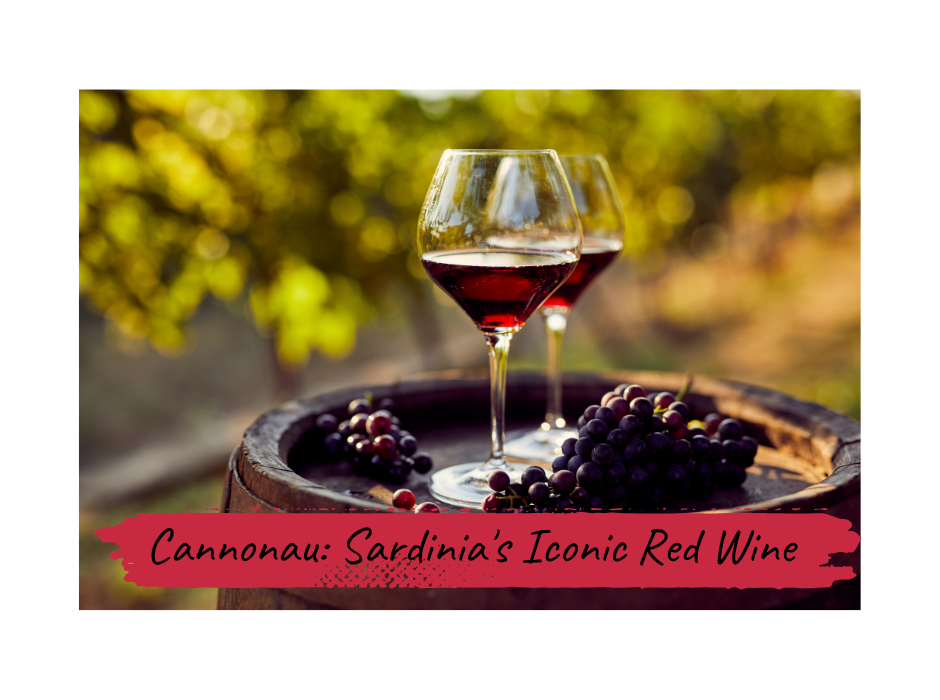Cannonau, the iconic wine of the island of Sardinia, is not only a gastronomic treasure but also an integral part of the island’s culture and history. Considered one of the world’s oldest wine varieties, locals believe that this special red wine is the key to the long life of the island’s inhabitants.
The history of Cannonau dates back to ancient times, when the Phoenicians and Romans introduced viticulture to Sardinia. Although it was long believed that the Cannonau grape originated in Spain and was brought to Sardinia by the Aragonese in the 1300s, recent research suggests that it is likely a native variety of the island, with a history spanning thousands of years. Cannonau, therefore, is not just a wine but a living heritage of Sardinia’s millennia-old history and culture.

Cannonau is genetically linked to Spain’s Garnacha and France’s Grenache. This late-ripening, thin-skinned grape produces deeply colored wines with a full body and medium to high alcohol content. The wine features abundant red fruit notes (such as strawberry and raspberry) along with some spice and white pepper. Cannonau can be made as a single-varietal wine or blended. Depending on where the wine is from, it can range from fruity to deep, rich, and spicy styles.
Most of the Cannonau vineyards are located in the sunny, dry areas of Sardinia, particularly along the eastern coastline. It is also worth visiting the Capo Ferrato area in the southeastern corner of the island, in the province of southern Sardinia.
We visited a winery where we experienced the traditions of Cannonau winemaking up close. Walking among the vines, Giuseppe passionately shared his story.
“Azienda Giuseppe Sedilesu is located in the Barbagia mountains, in the small village of Mamoiada. The winery began 35 years ago when Giuseppe and Grazia Sedilesu purchased a one-hectare plot of land, starting a family business with their three children, who now run the winery. The vineyard has grown to 15 hectares, 95% of which is planted with Cannonau grapes, and the remaining 5% with Granazza, a white grape variety. The wine was always sold in bulk on the island, but in 2000, when the children took over, they decided to bottle it for the market. Ten years later, they doubled production and built new cellars. The wine is named after the ‘mamuthone’ masks, used in local masked ceremonies and sacred rituals. Participants wear 60-kilogram cowbells on their backs to ward off evil spirits, covered in black sheepskins, with hand-carved black wooden masks on their faces. Bonfires are lit at night, and people dance in the piazzas. The event takes place on January 17th, St. Anthony’s Day, as well as during Carnival in February. It symbolizes the transition from the winter season to spring and promises good luck for the upcoming harvest.”

Tip: Visit a vineyard: Wine Tour in Cagliari Area
Wine Tour in Cagliari Area
In the cool cellar, we tasted some of the best vintages, and for a moment, it felt as if we were savoring a piece of the island’s history. Drinking Cannonau wine is not just a gastronomic experience but also a journey through Sardinia’s history and culture, which resonates in every


